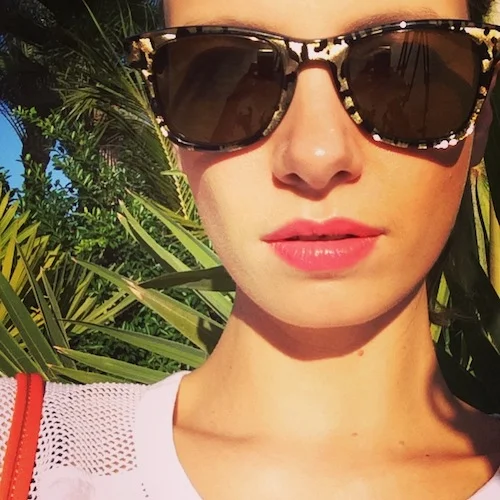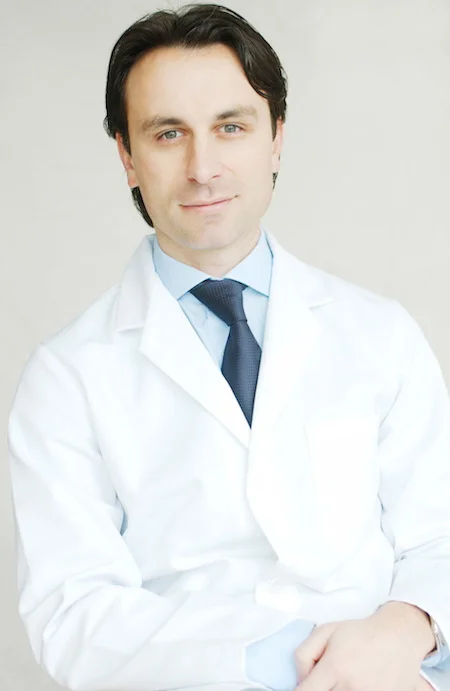
As promised, the sunscreen Q&A with Dr Marko Lens. A little later than anticipated, because there were a few extra questions that I had, including one regarding the recent Which? report on SPFs. If you didn’t read the Which? report then you can do so by clicking here – it raises some quite important issues regarding the way that brands label their sun protection and the claims that they make about exactly how much protection the user is getting. They tested a number of sun creams to see whether or not they provided the SPF30 and UVA protection stated on the packaging, but three of them failed. Now I’m not wholly convinced by this report, I must say; I don’t like huge, scaremongery, headline-grabbing reveals when not all of the information is readily available. There’s not much said about the testing itself – they just show tiny dots of sunscreen being applied to skin – and they don’t give any hard facts away. For example, Hawaiian Tropic failed the SPF30 test, but by how much? What if it had provided a sun protection factor of 28 or 29, for example? The way the test results are worded it makes it sound as though the failed products are completely unfit for purpose. A little more detail would be good…
Anyway, on with the show. Dr Marko has kindly answered some burning questions (pun intended!) for me and de-bunked a few myths. If you want answers to some more basic SPF questions then have a read of the piece I wrote last year after interrogating Dr M. “Do I Really Need to Wear SPF?” Dr Marko Lens, for those who haven’t read about him before, is a highly sought after reconstructive and plastic surgeon and an internationally renowned figure in the areas of skin ageing and skin cancer. You can read his biog here, but I hope you’ll agree that he’s a very useful man when it comes to questions about sun care and sun safety.

What are the most common misconceptions about sunscreens and the way in which we should use them?
– Misconception: “I do not need sunscreen as I have dark skin and I never burn”. Fact: all skin types including black and Asian skin need to protect their skin with a sunscreen.
– Misconception: “I do not want sunscreen with high SPF as I want to achieve a tan while sunbathing”. Fact: dermatologists around the globe recommend the use of a broad spectrum SPF 30 which provides high protection against UVB and UVA light. You can still achieve a tan while using SPF 30.
– Misconception: “I do not need to apply a lot of sunscreen to protect the skin”. Fact: the recommended dose is 2 mg per cm2. To cover the face we would need 1/4 of the teaspoon to supply adequate cover and protection.
– Misconception: “One good application of the sunscreen is enough while staying outdoors”. Fact: sunscreens should be applied every 2 hours.
– Misconception: “I do not need a sunscreen while driving”. Fact: wearing SPF protection while driving is just as important. Sunscreen protection is advisable even if the windows are closed.
– Misconception: “Use of sunscreens alone is sufficient to protect me against sun damage and skin cancer”. Fact: you also need to wear sunglasses and protective clothing.
– Misconception: “I have my make up with SPF and therefore I do not need sunscreen”. Fact: the majority of make-up products contain a low SPF and this is not sufficient for protection.
– Misconception: “I can safely tan if I use good sunscreen”. Fact: there is no “safe” tan even if you use the most efficient sunscreen.
– Misconception: “Use of sunscreen can protect my skin if I use it while in the sun bed”.
– Other common “slip ups” include forgetting to apply sunscreen to the lips, ears and scalp and thinking that you have to avoid the eye area when you apply sunscreen.

As a doctor, do you feel that the public are educated about sun protection adequately, or do you find the information that’s widely available to be lacking?
I do not think that the public is well educated about sun protection. Everyone should be educated on basic guidelines for sun protection:
– Seek shade and limit time in the sun, especially between 10 a.m. and 4 p.m.
– Wear protective clothing: long-sleeve shirts, long pants, hats with a wide brim and sunglasses.
– Use broad-spectrum sunscreen (protects against UVA and UVB rays) with sun protection factor (SPF) 30 or greater
– Use sunscreens every day if you will be outside (even on cloudy days)
– Re-apply sunscreen approximately every two hours and after swimming
There are so many sunscreens available; how do we know which ones are effective? Are there any particular ingredients or labelling phrases to look out for?
Consumers should always look for broad-spectrum sunscreen which is a sunscreen providing protection against both UVB and UVA light. Make sure to see a sign or text for broad-spectrum. Also, use SPF 30 and above. SPF 30 provides high protection. A SPF below 30 is not providing high protection which is the recommendation in order to prevent sun damage and skin cancer. Sunscreen alone is not enough. Therefore always look for formulas that include various antioxidants that are neutralising damaging free radicals. Also, ingredients that boost our immune system are good to increase protection of the skin against UV rays.
You have mentioned to me in the past that it can be very difficult and very expensive to both develop and properly test sun protection products; why is that?
Developing a good and effective sunscreen is a long process and also quite expensive. It is not easy to develop a sunscreen that will provide broad spectrum protection with SPF 30 and to have good sensorial profile. Testing the efficacy of the sunscreen is expensive particularly if we want to test the effect of the sunscreen on DNA damage.
And as for the new Zelens sunscreen; would you say that this is suitable for all skin types and colours? Where in a Skincare routine would you apply it?
It is suitable for all skin types and colours. It is oil-free and hypoallergenic. It should be used as a last step in skin care regime, just before application of the makeup.
Is there a reason that you didn’t develop an SPF50?
SPF30 absorbs 97% of UVB while SPF50 absorbs 98%- really clinically not relevant.
What are your thoughts on the recent “Which Report” on sunscreens?
It is not acceptable to claim SPF when actually you cannot achieve this minimum efficacy of a sunscreen against UVB. However, it is also necessary to use an appropriate test to ensure reproducibility and comparability of the results. Thus, according to the recommendations from the EC , the
International Sun protection Factor Test Method should be used as a standard test in Europe. [Which? say they tested to “strict British Standards”, but I’m afraid I don’t know how these tests compare. I shall endeavour to find out! Ruth]
Finally, I know that many people are concerned about their Vitamin D intake if they use an SPF daily. What are your thoughts on this?
Vitamin D is very important for our health. Sun exposure is critical for vitamin D production. However, we know that sun exposure is a major factor in causing skin aging and skin cancer. Therefore a balance between sun exposure and sun protection is needed. SPF protects the skin from UVB and by doing this reduces the skin capacity to produce vitamin D. I would recommend SPF 30 which absorbs 97% of the UVB. Also, I would always encourage people to use more fish in their diet and also to use Vitamin D supplement.
You can read about Dr Marko Lens’ new SPF in last week’s post here.

0 Comments